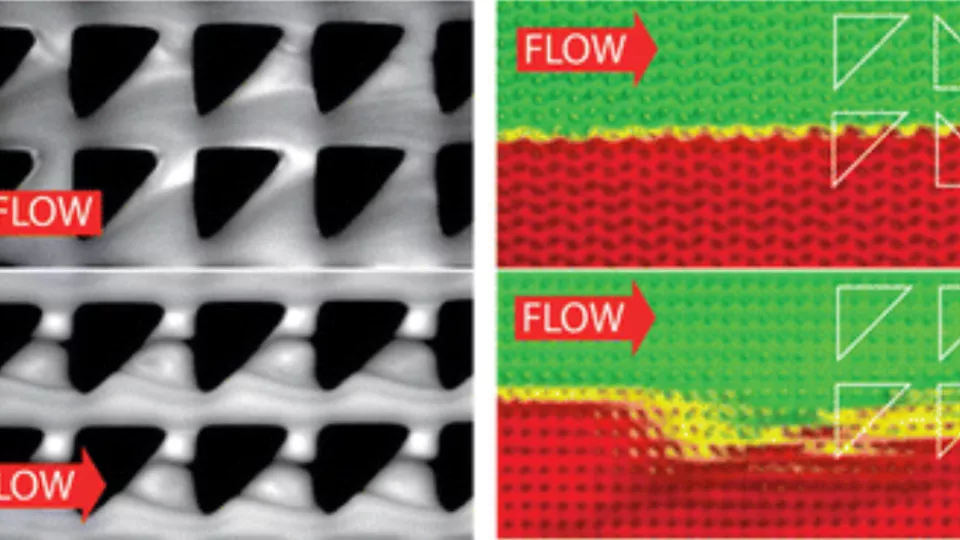In their recently published article, “Using symmetry to control viscoelastic waves in pillar arrays”, Professor Jonas Tegenfeldt, Jason P. Beech, Oskar Ström, and Enrico Turato demonstrate waves in a microfluidic channel as a high-contraction DNA solution is pumped through an array of pillars.
“Waves are visible as variations in the concentration of the DNA. In this particular paper, we explore the effect of symmetry in the design of the device. In particular, we break the lateral symmetry of the pillars. By making the pillars triangular and arranging them so that the flow is different from a left and right perspective, we can control the overall appearance of the waves,” Jonas Tegenfeldt explains.
Why are these results so interesting?
“It demonstrates how we can use symmetry to show how changes on the micrometer scale are reflected in the behavior of the waves on the millimeter scale.”
The most important thing the group has learned from this study is identifying one way to control the waves and the instabilities in the flow by controlling the shape and symmetry of the pillars.
The results can be useful in several ways, according to Jonas Tegenfeldt.
This opens up for creating a fluidic diode that may be valuable for advanced processing of fluids with relevance for e.g. medicine, food industry and water treatment.
“We have identified three applications of the knowledge that we gained in the work that has been described in the paper”, says Jonas Tegenfeldt. Those are:
- Enhanced mixing — mixing is difficult in microfluidics; with the knowledge gained in the presented work, we can optimize devices so that we maximize the waves which in turn will act as turbulence and enhance the mixing.
- Suppressed mixing — based on the conclusions of the current work, we can suppress the waves, and thereby allow transport of viscoelastic fluids with a minimum of fluctuations. This allows well-controlled processing of viscoelastic fluids with relevance for e.g. medicine, food industry, and water treatment.
- Fluidic diode — with broken symmetry the flow resistance is different in the two directions in the channel; this opens up for creating a fluidic diode that may be valuable for advanced processing of fluids with relevance for e.g. medicine, food industry and water treatment.
“We are in full control of viscoelastic fluctuations so that we can maximize them for mixing applications and minimize them for unperturbed transport with relevance for medical devices, food processing, and water treatment,” says Jonas Tegenfeldt.
Read the article in the journal RSC Advances


